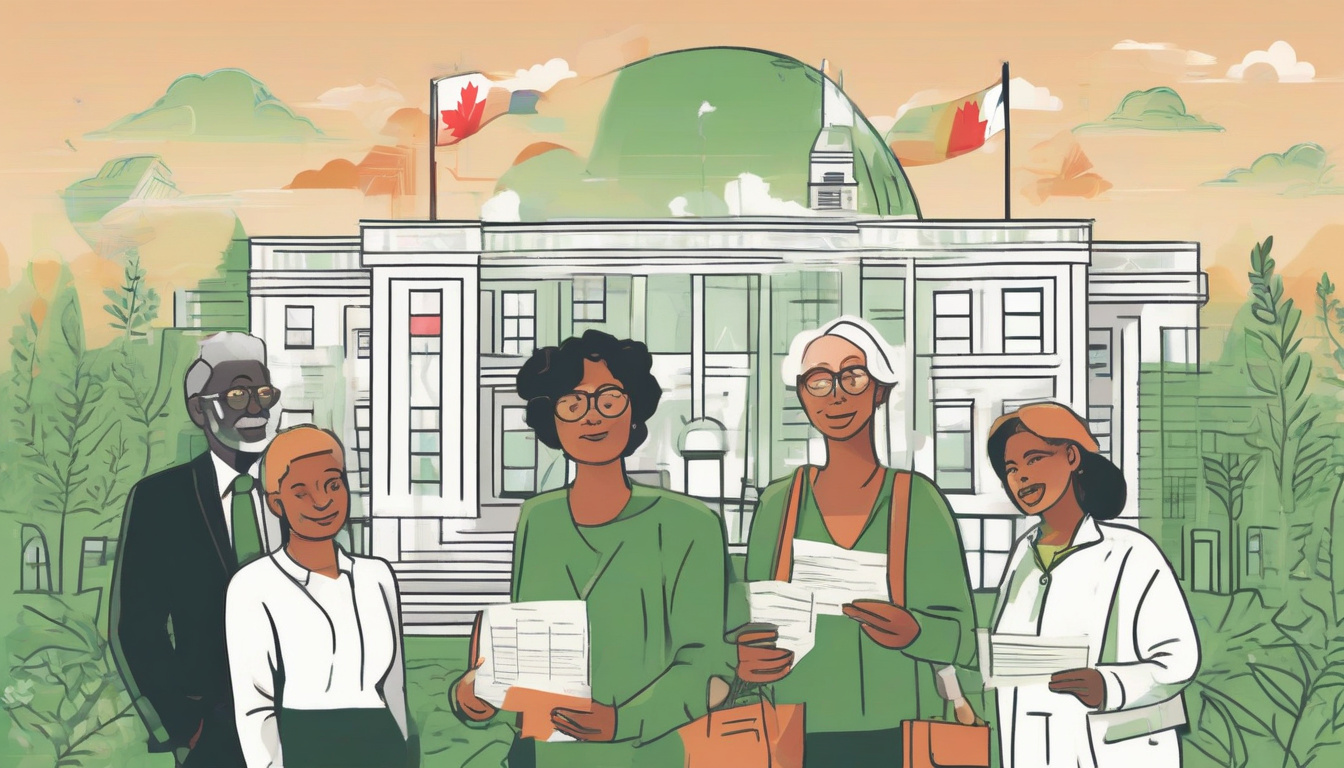Struggling with credit card debt can feel overwhelming, but you don’t have to face it alone. Many individuals are unaware that there are government programs designed to alleviate this financial burden. In this guide, we will delve into credit card debt relief government programs, exploring their various facets and how they can help you reclaim your financial stability. From understanding the nature of credit card debt to applying for these relief programs, we’ll discuss eligibility criteria, application processes, and long-term strategies for achieving financial freedom. Whether you’re grappling with high-interest rates or just trying to manage your monthly payments, unlocking the benefits of government assistance can be the first step towards a healthier financial future.

Key Takeaways
- Credit card debt can be a significant financial burden for many individuals.
- Various government programs exist to provide relief for those struggling with credit card debt.
- Eligibility for government debt relief programs often depends on income levels and financial circumstances.
- Applying for credit card debt relief through government programs typically involves completing specific application processes and providing documentation.
- Achieving financial freedom involves not only debt relief but also implementing long-term financial management strategies.
Understanding Credit Card Debt: The Financial Burden
Credit card debt can create a significant financial burden for millions of individuals and families. The ease of accumulating credit through cards often leads to overspending, creating a cycle of debt that can be challenging to escape. Understanding the nature of this debt is crucial for finding effective solutions. A credit card debt relief government program can serve as a valuable resource for those struggling with high-interest rates and overwhelming monthly payments. These programs may offer lowered interest rates, settlement options, or even debt forgiveness in certain circumstances. For many, these relief options can provide a much-needed lifeline, allowing them to regain control of their finances and work towards a debt-free future. By educating oneself on the available government assistance and understanding the implications of credit card debt, individuals can make informed decisions that lead to financial recovery.
Overview of Government Programs for Debt Relief
In recent years, various governmental initiatives have been introduced to assist consumers burdened by credit card debt. Credit card debt relief government programs are designed to provide financial relief, support, and guidance to individuals struggling to manage their debts effectively. These programs can vary widely in focus, with some targeting low-income families, others offering educational resources, and some providing direct financial assistance or loan forgiveness options.
For instance, one of the flagship efforts made at the federal level has been the Credit Card Accountability, Responsibility, and Disclosure (CARD) Act. Enacted in 2009, this legislation aimed to protect consumers from misleading bank practices and ensure transparency in credit card agreements. As a result, consumers are now better informed about their credit card terms, fees, and interest rates, which helps them make healthier financial choices.
Additionally, state programs may exist to help residents manage their credit card debts. These local initiatives often collaborate with non-profit organizations to provide debt counseling services, budget workshops, and financial literacy programs designed to empower individuals to take charge of their financial health.
Furthermore, some government-backed loans and programs may assist in consolidating high-interest debts into a single, lower-interest loan, easing repayment burdens. Understanding the various credit card debt relief government programs available can offer significant support and guidance, leading to more effective debt management and improved financial well-being.
‘The only thing worse than being blind is having sight but no vision.’ – Helen Keller

Eligibility Criteria for Government Debt Relief Programs
### Eligibility Criteria for Government Debt Relief Programs
Understanding the eligibility criteria for credit card debt relief government programs is crucial for individuals seeking financial assistance. These programs are typically designed to help those facing severe financial distress due to overwhelming debt and include various options such as debt consolidation, negotiation, or forgiveness. Generally, the qualifications required to participate in these programs include:
1. Income Level: Applicants must demonstrate a certain level of income; usually, it’s determined relative to the median income in your area. Low-income individuals or those who can prove that their financial situation profoundly impacts their ability to manage debts may qualify.
2. Debt Amount: There’s often a minimum or maximum debt threshold; for example, individuals might need to have unsecured debts, including credit cards, totaling a specified amount to qualify. Programs often prioritize those with high debt-to-income ratios, indicating significant financial strain.
3. Type of Debt: Many government programs focus specifically on unsecured debts, such as credit cards and medical bills, while secured debts, like mortgages, usually fall outside the program’s scope.
4. Residence: Eligibility may be restricted based on where the applicant lives. Some programs are state-specific, meaning you must reside in that state to be eligible for their relief solutions.
5. Demonstrated Financial Hardship: Applicants usually need to prove they are experiencing financial hardship. This could involve providing documentation of job loss, medical expenses, or other circumstances that contribute to their inability to pay off debts.
6. Credit Counseling Requirement: Some programs require individuals to complete credit counseling before they can receive debt relief. This counseling aims to educate applicants about managing credit and developing a plan for financial stability.
By evaluating these criteria, individuals can better understand their chances of qualifying for credit card debt relief government programs and take appropriate steps to alleviate their financial burdens.
How to Apply for Credit Card Debt Relief Through Government Programs
Applying for credit card debt relief through government programs can be an effective way to alleviate financial burdens associated with high-interest debt. First, it’s essential to understand the types of programs available. Some government-sponsored initiatives may include debt management plans or financial education resources aimed at helping consumers better manage their finances. To begin the application process, gather necessary documentation, such as your credit card statements, income, and expenses, to clearly outline your debt situation.
Next, visit the official government websites or contact certified credit counseling agencies recognized by the government to explore available options. It’s crucial to ensure that any program you consider is legitimate and provides support specifically for credit card debt relief. When applying, be prepared to share your income details and any other debts you may have.
Many government programs also offer workshops or webinars on budgeting and money management, which can be invaluable in not only obtaining relief but also in preventing future debt accumulation. Always remember to read the fine print and understand any fees involved in joining these programs. This proactive approach not only helps in finding immediate relief but also equips you with essential skills for better financial management in the future.

Long-term Strategies for Financial Freedom Beyond Debt Relief
### Long-term Strategies for Financial Freedom Beyond Debt Relief
In the quest for financial stability, many individuals initially seek immediate relief from burdensome debt through options like credit card debt relief government programs. While these programs can provide short-term assistance, it’s crucial to build a long-term financial strategy that supports sustained freedom from debt. Here are several strategies that extend beyond the phase of merely addressing immediate credit card debt to foster a healthier financial future.
####
1. Budgeting and Expense Tracking
Establishing a comprehensive budget is fundamental for long-term financial health. This involves not just tracking income and expenses, but also adjusting spending habits to prioritize savings and debt repayment. By utilizing budgeting apps or worksheets, individuals can gain visibility into their spending patterns and identify areas for improvement.
####
2. Building an Emergency Fund
Creating an emergency fund is a critical step that can prevent future debt accumulation. Financial experts recommend saving at least three to six months’ worth of living expenses. This cushion helps ensure that unexpected expenses don’t lead back to relying on credit cards. Starting small, such as setting aside a portion of each paycheck, can help create this safety net over time.
####
3. Increasing Financial Literacy
Improving one’s financial literacy can empower individuals to make informed decisions about money management and investment opportunities. Engaging in workshops, online courses, or reading financial books can enhance understanding of essential topics such as interest rates, investments, and retirement planning.
####
4. Exploring Alternative Income Sources
In addition to traditional employment, exploring alternative income sources can increase cash flow. This can include starting a side business, freelancing, or passive income streams such as rental earnings or dividend stocks. Diversifying income helps cushion against financial downturns and increases overall financial stability.
####
5. Regularly Reviewing Financial Goals
Setting financial goals is just the beginning; regularly reviewing progress towards these goals is equally important. Setting milestones for saving, investing, or debt repayment can keep individuals motivated and accountable. Adjustments may be necessary as circumstances change, allowing for flexibility in financial planning.
#### Conclusion
While seeking immediate relief from credit card debt is essential, developing a long-term financial strategy is crucial for sustained success. By focusing on budgeting, building an emergency fund, increasing financial literacy, exploring additional income sources, and regularly reviewing financial goals, individuals can achieve true financial freedom and security, and ultimately break the cycle of debt.
Frequently Asked Questions
What types of government programs are available for credit card debt relief?
Various government programs offer debt relief solutions, including Loan Modification Programs, Debt Management Plans, and Consumer Credit Counseling services. These programs are designed to help individuals manage and reduce their credit card debt effectively.
Am I eligible for government programs that provide credit card debt relief?
Eligibility criteria vary by program but generally include factors such as income level, total debt amount, and proof of financial hardship. It’s essential to review the specific requirements for each program to determine your eligibility.
How can I apply for credit card debt relief through government programs?
To apply, you typically need to gather necessary financial documents, complete an application form, and submit it to the agency or program administering the relief. You may also benefit from contacting a certified credit counselor for further guidance.
Are there any fees associated with government debt relief programs?
Most government-sponsored programs are free or low-cost. However, some services, such as credit counseling or debt management plans administered by non-profits, might charge a nominal fee. It’s important to verify any costs before proceeding.
What should I do after receiving credit card debt relief to maintain financial stability?
Post-relief, focus on creating a budget, managing your expenses, building an emergency fund, and improving your credit score. Implementing long-term financial strategies will help ensure you avoid falling back into debt.
